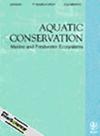Reducing Cetacean Interactions With Bottom Set-Nets and Purse Seining Using Acoustic Deterrent Devices in Southern Iberia
Abstract
In southern Iberia (NE Atlantic), cetacean bycatch is reported in several fisheries, whereas depredation by bottlenose dolphin (Tursiops truncatus) is commonly observed in bottom set-net fisheries. This study tested the effectiveness of acoustic deterrent devices in discouraging small cetaceans from approaching bottom set-nets and purse seine to reduce interactions. The acoustic deterrent devices used in the study were dolphin deterrent devices and dolphin interactive devices for the bottom set-net fishery to reduce dolphin bycatch and depredation and dolphin deterrent devices in the purse seine fishery to reduce common dolphin (Delphinus delphis) bycatch. Data collection was carried out by at-sea observers and trained fishing vessel crew observers. Hauls with and without acoustic deterrent devices were compared and analysed to investigate differences in catch per unit effort, factors affecting the interaction, probability of interaction and habituation (in bottom set-nets only). In bottom set-nets, the depredation rate was significantly lower and reduced by about 50% in hauls using acoustic deterrent devices. Habituation of the bottlenose dolphins to the devices was observed but was gradual. In the purse seine fishery, common dolphin bycatch was reduced by 100% when using the acoustic deterrent devices. Overall, the results are promising, but the different interaction reduction efficiencies observed between gear types indicate that the potential application of acoustic deterrent devices should be considered on a métier-by-métier basis. Other mitigation measures should be developed, especially for static gears, in collaboration with the fishing sector in an inclusive management approach to reduce direct interactions between fisheries and cetaceans.

 求助内容:
求助内容: 应助结果提醒方式:
应助结果提醒方式:


